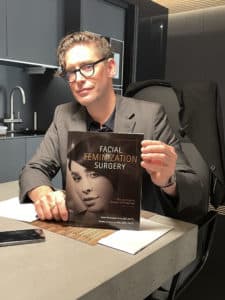What is a Cleft Lip?
A cleft lip (cheiloschisis) is a type of congenital deformity caused by abnormal facial development during gestation. A “cleft” is a gap or opening, a non-fusion of the body’s natural structures that occurs in utero. Cleft lip may occur alone or in a variety of syndromic situations. A cleft lip and cleft palate occur together at a rate of 1-in-700 newborn babies. The average cleft lip is repaired during infancy at approximately 3 months of age. At this young age, the child will not remember the operation and the scarring is minimal. The quality of the repair is often somewhat dependent on the severity of the cleft. Often it is required to perform additional touch-up or nasal surgery later in life to achieve the best long-term outcome. Children with a cleft lip or palate most often go on to lead normal lives and have normal intelligence.

Read Our Book
The wait is over! Dr. Deschamps-Braly’s new book “Facial Feminization Surgery: The Journey to Gender Affirmation” is back and available now. This second edition covers the advances in facial feminization as well as helpful patient stories and is a great resource for FFS patients and their loved ones.
LEARN MOREWhat is a Cleft Palate?
A cleft palate – although often associated with cleft lips – is a different entity. A cleft palate may mean that only the soft palate is involved, or the whole palate may also be involved including the portion of the maxillary bone where some of the tooth buds form. This may ultimately have implications for dental development.
Cleft palates are most commonly operated on at the age of approximately 10 months; however, this age is subject to interpretation and there may be reasons to delay treatment of the palate. The technique of palate repair is important and proper technique is imperative to not delay or permanently alter the growth of the face and jaw. A cleft palate, when present without a cleft lip, has a higher chance of having an involved syndrome such as:
- Pierre Robin Sequence
- Velo Cardio Facial Syndrome
- CHARGE syndrome
- Van Der Woude Syndrome
- Di George Syndrome
Visit here to learn more.


